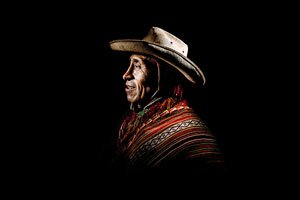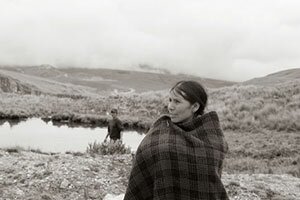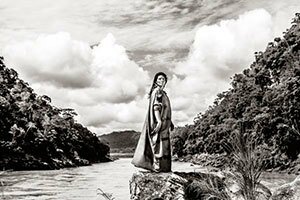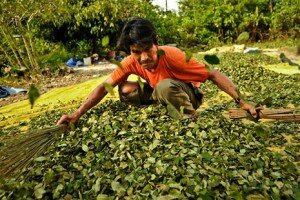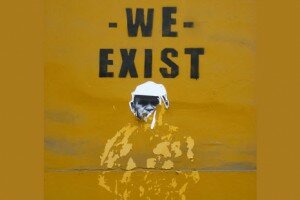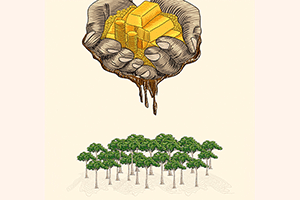
Illustrations by Héctor Huamán. Etiqueta Negra.
I cannot see images of mining in Madre de Dios, writes Ernesto Raez Luna, without feeling physically sick. Gold is an obsession for this environmentalist and writer, but not for the same reasons as those in his native Peru who mine it, those pilgrims of the yellow king. The ravages it inflicts on the trees and the rivers, the ravages it exacts on the men, the women, the teenaged children who follow its path into the Andean foothills at the headwaters of the Amazon: what skyrocketing gold prices on Western commodity exchanges have wrought.
I once held a heavy gold coin in the palm of my hand.




































